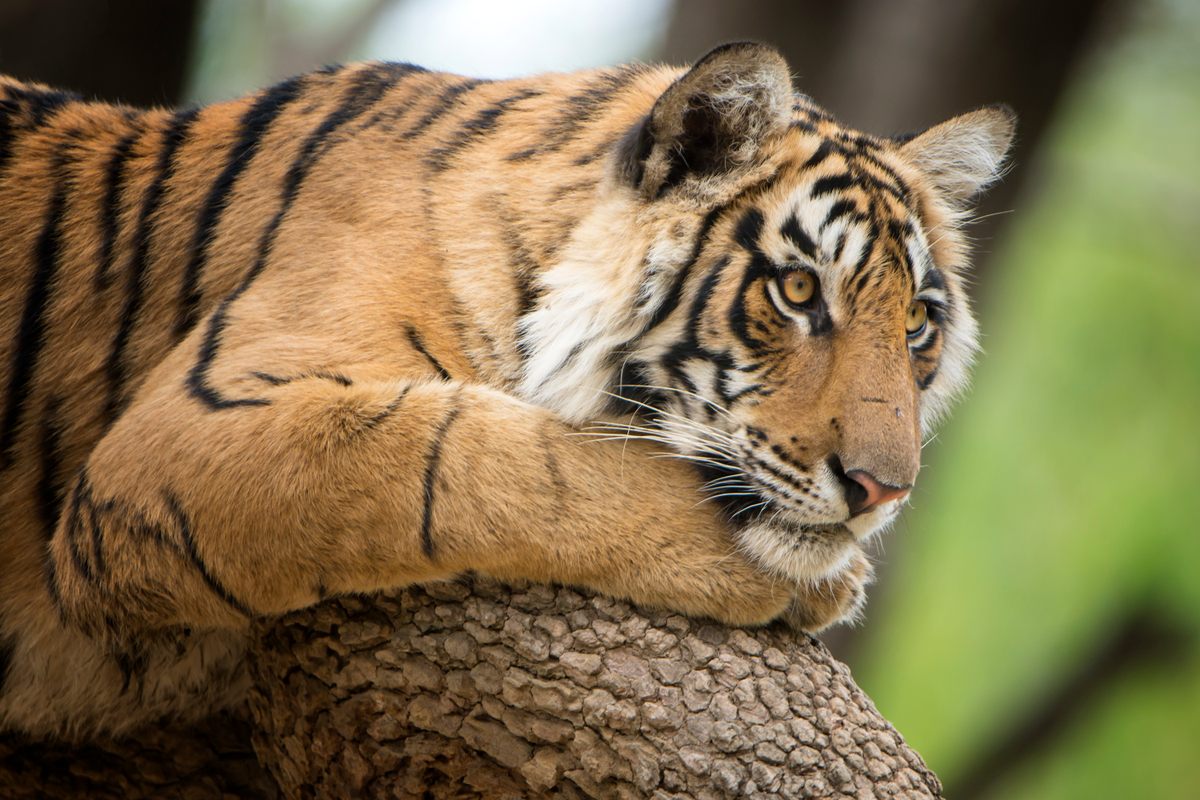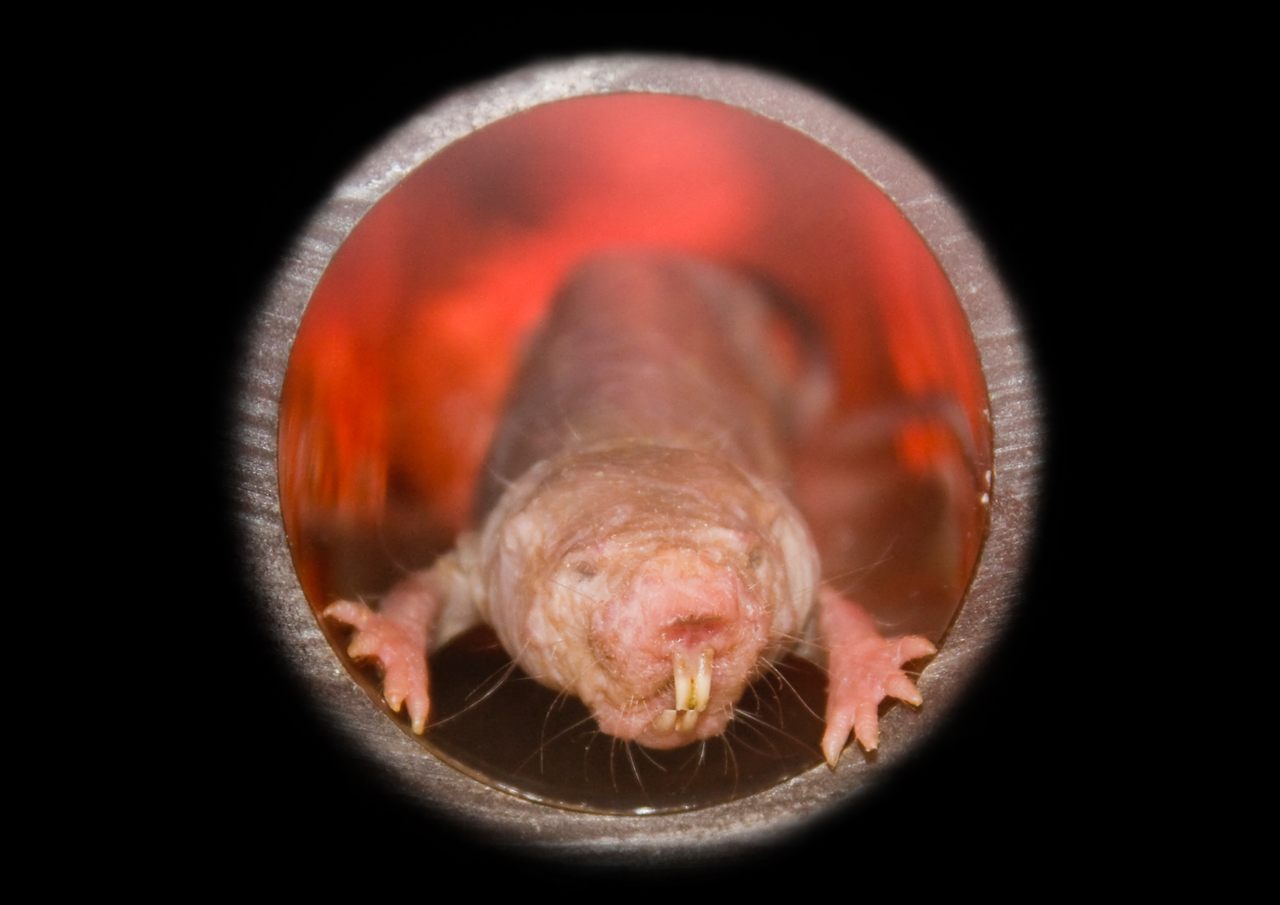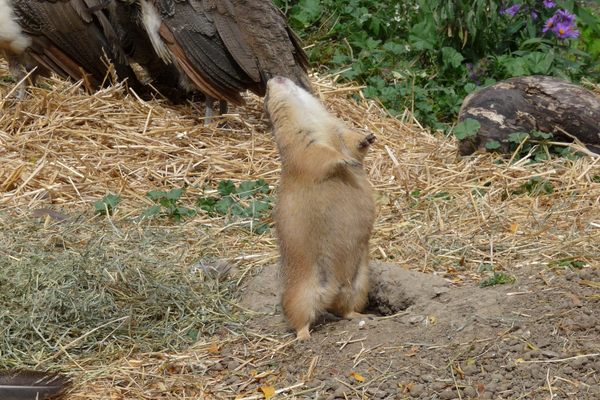The Secrets of the Longest-Living Mammals
Why do mole rats, Brandt’s bats, and bowhead whales live so much longer than their relatives?
The common shrew only lives about a year. Black rhinos, on the other hand, can make it to a 50th birthday. They’re very different creatures, for sure, but even species that are rather alike—take a lab rat and a wild, hairless counterpart, the naked mole rat—can have drastically different lifespans, too. Think three years versus 30. We humans can live twice or three times as long as our closest relatives, chimpanzees.
It’s natural to ask which mammal lives the longest. Spoiler alert: It’s the bowhead whale. (There are a few other, non-mammalian creatures that have them beat: a deep-dwelling shark, a clam, a jellyfish that just doesn’t die at all.) But what constitutes a long life can vary widely based on size and lifestyle, metabolism and environment, so maybe the better question is why some mammals live way, way longer than they ought to. Understanding that takes us to the nature of aging in mammals itself.
As humans, we understand how it feels to age. Joints creak, skin sags, things go wrong, and, to our dismay, more and more of our friends pass away. Humans and most other mammals are subject to what’s called the Gompertz-Makeham Law. This mathematical model—seemingly apparent but no less distressing for it—states that the risk of death goes up exponentially as we age. As the years and decades tick by, our cells slowly stop dividing, leaving a greater burden on the ones that are left. They break down, taking function with them until we can’t fight back any more.
There are a few go-to rules for predicting the average lifespan of a given animal, but mammals are a bit different, and these rules are guidelines more than anything else. Brain weight, body size, and metabolism are the three key predictors of longevity in warm-blooded, live-birthing (except for the egg-laying monotremes) mammals: In general, the smarter, bigger, and slower a mammal is, the longer it is likely to live. Warm-blooded birds follow the same rules in general, but tend to outlive mammals of the same size, despite their raging metabolisms. This is true of larger reptiles, too, but their metabolisms are about 10 times slower than mammals of the same size—a benefit of cold-bloodedness.

In addition to this general trend, there are a few evolutionary tricks that studies show correlate to longer lives in animals, from hanging out in groups, to spending time in hibernation, to living in low temperatures—in addition to a myriad of ways to avoid an early death by being good at evading predators.
“Aging emerges from every other aspect of an organism’s life,” says evolutionary geneticist Patrick Phillips at University of Oregon, “which is what makes it biologically complex.”
One mammal that seems to have taken every possible route to longevity is that naked mole rat. A 30th birthday may not sound remarkable for a human in the 21st century, but for a rodent, it’s just crazy. Depending on size and other factors, most rodents might expect to live six years. But the homely, toothy, hairless mole rat, which lives in underground colonies of 70 (with records up to 275) in the arid grasslands of East Africa, reaches 17 regularly in the wild, and over 30 in cushy captivity. “From an evolutionary perspective, they’re relatively close to other rodents, but you’ve got this 10-fold difference, at least, in lifespan,” says Matt Kaeberlein, CEO of Optispan, an aging-focused medical company. “I think that’s fascinating.”
So why do mole rats get to live so long? The answer lies in evolutionary strategy. It only makes sense for an animal to invest in repairing cells if it’ll be around long enough to reap the rewards. Animals that are easily picked off by predators have more immediate concerns, such as running fast and breeding like—well, rabbits. Natural selection isn’t pushing them toward long lifespans, so they found evolutionary success in living fast, dying young, and generally not worrying about their bodies breaking down from old age. Few will survive to see it, and they will have passed their genes to new generations long before they ever would.
Some mammals take the opposite route: slow and steady, with a focus on growing or securing social dynamics, which can increase their future offspring’s chance of survival. This pushes back their sexual maturity and, in turn, lifespan. “Late reproduction will lead to increased lifespan, because the selection is on the reproduction itself,” says Phillips. “And if you’re dead, you can’t reproduce.”
For the naked mole rat, its low-key, social lifestyle may be what gave it an advantage to slow aging way down. Mole rats live relatively safe lives, sheltered in subterranean tunnels with very little to force them out, where predators can take advantage of their meager defenses. Another explanation could be their social system, with a single queen who does the mating for the whole colony, like bees or ants. A 2023 study shows that, on average, social animals have been shown to live longer (but not always) than loner species, such as tigers.

And when they do die, mole rats don’t really die of old age. Experts don’t quite know why yet, but research points to multiple unique quirks in mole rat molecular machinery that might have something to do with it. Their high production of hyaluronic acid, a sticky anti-aging molecule (and popular ingredient in high-end skin lotions), may be one piece of the puzzle.
One of the most tried and true rules for predicting a mammal’s lifespan—one that the mole rat notably flouts—is that bigger is better. Elephants and whales are classic examples. They’re less susceptible to predators (except humans), so evolution favored long lives, with slow metabolisms that put less wear and tear on their cells, and strong cellular repair functions.
But like any rule, there are exceptions. There’s the mole rat, but also Brandt’s bat—a little flier from Europe and Western Asia that weighs about the same as a marshmallow and has a buzzing, rapid metabolism. But they can live over 40 years in the wild. This is actually a trend in the bat world—many other species outlive their predicted age based on size. Perhaps because bats can fly, avoiding more predators, they also invested, evolutionarily speaking, in living longer, which might also be aided by time spent in hibernation. The bats’ molecular tricks for long life remain a mystery.

That brings us to the mammal lifespan ruler, the bowhead whale, which can live more than 200 years. While bowhead whales are big, they still live twice as long as their size would suggest. That might have more to do with their home in the Arctic waters. In fact, many of the longest lived across the animal kingdom reside in the cold depths. The Greenland shark can go well over the 200 mark. One unlucky (or lucky, depending on your perspective) quahog clam plucked from the depths off the coast of Iceland in 2006 was revealed to be 507 years old—making it a hair older than the Mona Lisa. There’s also the immortal jellyfish that reverts to a juvenile form in times of stress, and lobsters, which can keep growing and growing until they get a disease or get caught; the largest known was the size of a toddler and thought to be 150 years old.
“It’s easier to evolve a longer lifespan in a colder environment,” says Kaeberlein. But, he adds, “I don’t think that’s the whole story.” Differences in predation and oxygen levels—oh yes, plenty of oxygen is actually associated with a shorter life—play a part, too. And, it’s tricky to really know what some animals’ maximum lifespans are, especially when they’re difficult to bring into a lab, and could outlive a scientist.
“The things that are most interesting are also experimentally intractable,” says Phillips. “But you never know where the next great insights are going to come from.”

We know what you might be thinking. Is there a way for humans to ape the molecular longevity tricks of a bat or a whale? Scientists are trying to mess with the process of aging, but haven’t found the switch yet. For now, researchers have the tools to push back disease and manipulate human lifespan by 10, maybe 20 years, says Kaeberlein. When it comes to big changes, like the difference between a lab rat and naked mole rat, scientists are still in the dark.
Animals use all kinds of evolutionary tools to fit their specific needs, environments, and natural histories. “So there almost have to be multiple ways you can evolve differences in species longevity,” says Kaeberlein. “That’s the beauty of evolution.
“It’s frustrating, but it’s inspiring to know that it’s possible,” he continues. “Natural selection has figured this out. So it is clearly possible to have very, very large effects on longevity and proportionately on health span. It’s just that it’s so complicated we haven’t figured it out.”























Follow us on Twitter to get the latest on the world's hidden wonders.
Like us on Facebook to get the latest on the world's hidden wonders.
Follow us on Twitter Like us on Facebook